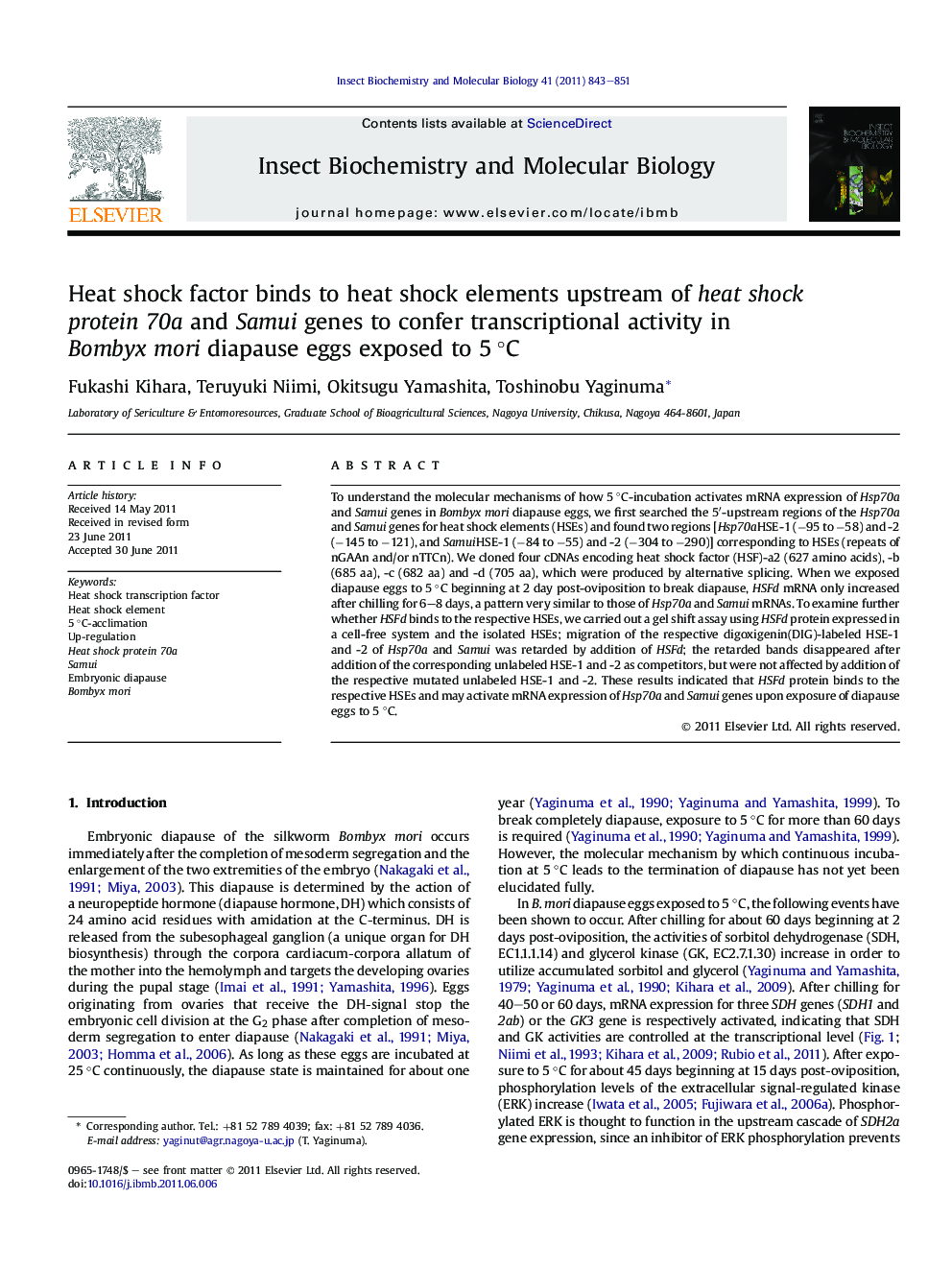| Article ID | Journal | Published Year | Pages | File Type |
|---|---|---|---|---|
| 1982299 | Insect Biochemistry and Molecular Biology | 2011 | 9 Pages |
To understand the molecular mechanisms of how 5 °C-incubation activates mRNA expression of Hsp70a and Samui genes in Bombyx mori diapause eggs, we first searched the 5′-upstream regions of the Hsp70a and Samui genes for heat shock elements (HSEs) and found two regions [Hsp70aHSE-1 (−95 to −58) and -2 (−145 to −121), and SamuiHSE-1 (−84 to −55) and -2 (−304 to −290)] corresponding to HSEs (repeats of nGAAn and/or nTTCn). We cloned four cDNAs encoding heat shock factor (HSF)-a2 (627 amino acids), -b (685 aa), -c (682 aa) and -d (705 aa), which were produced by alternative splicing. When we exposed diapause eggs to 5 °C beginning at 2 day post-oviposition to break diapause, HSFd mRNA only increased after chilling for 6–8 days, a pattern very similar to those of Hsp70a and Samui mRNAs. To examine further whether HSFd binds to the respective HSEs, we carried out a gel shift assay using HSFd protein expressed in a cell-free system and the isolated HSEs; migration of the respective digoxigenin(DIG)-labeled HSE-1 and -2 of Hsp70a and Samui was retarded by addition of HSFd; the retarded bands disappeared after addition of the corresponding unlabeled HSE-1 and -2 as competitors, but were not affected by addition of the respective mutated unlabeled HSE-1 and -2. These results indicated that HSFd protein binds to the respective HSEs and may activate mRNA expression of Hsp70a and Samui genes upon exposure of diapause eggs to 5 °C.
Graphical abstractFigure optionsDownload full-size imageDownload high-quality image (130 K)Download as PowerPoint slideHighlights► We found the heat shock elements (HSEs) upstream of the Hsp70a and Samui genes. ► We cloned cDNAs encoding heat shock factor (HSF)-a2, -b, -c and -d. ► HSFd mRNA only increased after chilling for 6–8 days. ► Gel shift assays indicated that HSFd protein bound to the respective HSEs. ► Its binding may activate both genes upon exposure of B. mori diapause eggs to 5 °C.
